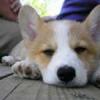Bump Map Question
When modeling a head, do you use bump mapping for things such as the wrinkles and or dimples or are you supposed to model those in manually?
If you dont use bump mapping for these situations, what situations call for bump mapping?
Bump mapping can be used for such things, but nowadays normal maps are used for such purposes. A bump map provides a one dimensional map for telling the renderer how to shade an object to approximate depth. Normal maps provide 3d lighting information, and so are preferred over bump maps. Obviously they are more computationally intensive, though.
Bump mapping can be used anywhere you want to show actual texture to something. Normal mapping is always going to be preferred, but normal mapping a wall that a player isn't going to actually get all that close to is a waste of resources, so in that case you might want to go ahead and bump map it instead.
Bump mapping can be used anywhere you want to show actual texture to something. Normal mapping is always going to be preferred, but normal mapping a wall that a player isn't going to actually get all that close to is a waste of resources, so in that case you might want to go ahead and bump map it instead.
Thanks. I knew that modeling dimples and wrinkles would just be a waste of polys so I figured that bump mapping would be the ideal tool for that situation. Thanks for clearly everything up and letting me know about normal mapping also.
Modeling dimples and wrinkles is usually done with a 3d sculpting tool, such as Zbrush or Mudbox, with a very high resolution model (ie conceivable millions of polys). This super high resolution model is used to generate a normal map off of. Like I said, the normal map stores three dimensional lighting information from this super high detailed model. You then apply your normal map to your lower resolution model. This allows you to have a model with a reasonable poly count AND interact with your game's lighting as if it were the super high poly version. For game characters, this is pretty much the standard now.
Normal mapping the hell out of everything in your environment would require generating high resolution version of everything (so additional man hours for the art generation) and requires more system resources for processing all of those normal maps. For these instances, bump mapping it sufficient. A dirt road with a normal map instead of a bump map just doesn't affect players the same as a normal map on their character as compared to a bump map.
Normal mapping the hell out of everything in your environment would require generating high resolution version of everything (so additional man hours for the art generation) and requires more system resources for processing all of those normal maps. For these instances, bump mapping it sufficient. A dirt road with a normal map instead of a bump map just doesn't affect players the same as a normal map on their character as compared to a bump map.
I saw that on the GEARS OF WAR 2 bonus disc. They Z brushed dom and marcus and then used that texture to put on their low poly version. I understand how to bump map. You basically take the texture and upload it into photoshop and use the bump effect and then apply that to the model before applying the color texture. This gives it that look of 3d when it's actually flat.
Normal mapping is confusing to me though. How exactly will I get the texture of the high poly model. Is their a tool you use? The reason I ask, is because I don't have z-brush. I have a Anim8or and Maya LE. How exactly do you go about normal mapping?
Normal mapping is confusing to me though. How exactly will I get the texture of the high poly model. Is their a tool you use? The reason I ask, is because I don't have z-brush. I have a Anim8or and Maya LE. How exactly do you go about normal mapping?
This topic is closed to new replies.
Advertisement
Popular Topics
Advertisement




